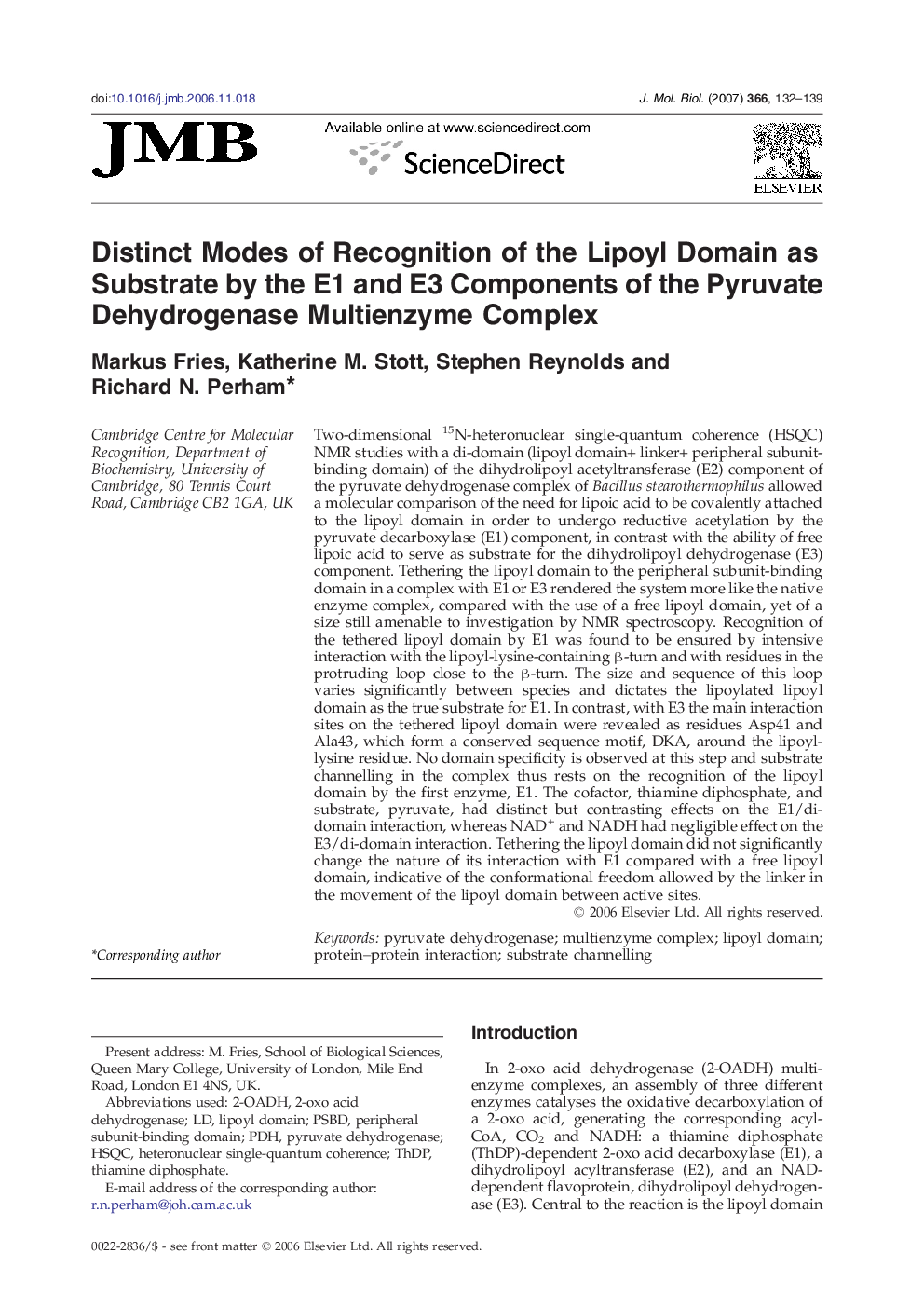| کد مقاله | کد نشریه | سال انتشار | مقاله انگلیسی | نسخه تمام متن |
|---|---|---|---|---|
| 2188713 | 1096183 | 2007 | 8 صفحه PDF | دانلود رایگان |

Two-dimensional 15N-heteronuclear single-quantum coherence (HSQC) NMR studies with a di-domain (lipoyl domain+ linker+ peripheral subunit-binding domain) of the dihydrolipoyl acetyltransferase (E2) component of the pyruvate dehydrogenase complex of Bacillus stearothermophilus allowed a molecular comparison of the need for lipoic acid to be covalently attached to the lipoyl domain in order to undergo reductive acetylation by the pyruvate decarboxylase (E1) component, in contrast with the ability of free lipoic acid to serve as substrate for the dihydrolipoyl dehydrogenase (E3) component. Tethering the lipoyl domain to the peripheral subunit-binding domain in a complex with E1 or E3 rendered the system more like the native enzyme complex, compared with the use of a free lipoyl domain, yet of a size still amenable to investigation by NMR spectroscopy. Recognition of the tethered lipoyl domain by E1 was found to be ensured by intensive interaction with the lipoyl-lysine-containing β-turn and with residues in the protruding loop close to the β-turn. The size and sequence of this loop varies significantly between species and dictates the lipoylated lipoyl domain as the true substrate for E1. In contrast, with E3 the main interaction sites on the tethered lipoyl domain were revealed as residues Asp41 and Ala43, which form a conserved sequence motif, DKA, around the lipoyl-lysine residue. No domain specificity is observed at this step and substrate channelling in the complex thus rests on the recognition of the lipoyl domain by the first enzyme, E1. The cofactor, thiamine diphosphate, and substrate, pyruvate, had distinct but contrasting effects on the E1/di-domain interaction, whereas NAD+ and NADH had negligible effect on the E3/di-domain interaction. Tethering the lipoyl domain did not significantly change the nature of its interaction with E1 compared with a free lipoyl domain, indicative of the conformational freedom allowed by the linker in the movement of the lipoyl domain between active sites.
Journal: Journal of Molecular Biology - Volume 366, Issue 1, 9 February 2007, Pages 132–139